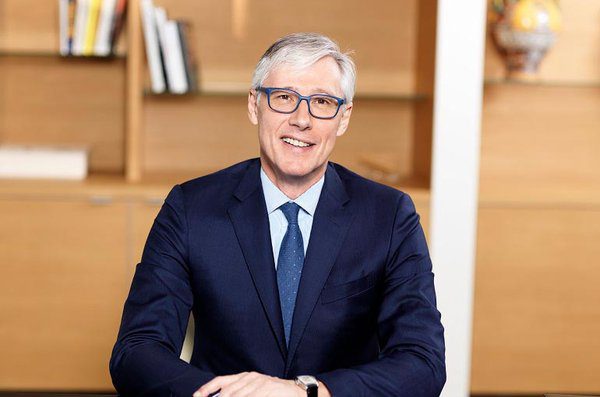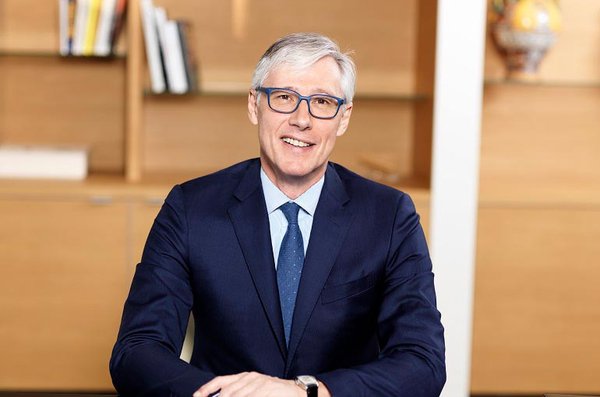SHANGHAI, June 4, 2018 /PRNewswire/ — Olivier Brandicourt, chief executive officer of the Sanofi Group, recently made a trip to China again. This time, Olivier came to China with the entire Executive Committee of the Group. They kept attending events during the tight five-day schedule, including the 13th International Business Leaders Advisory Council for the Mayor of Beijing, a meeting with the mayor of Shanghai, the signing ceremony for a MOU for strategic cooperation with China Ping An Insurance, visits to hospitals and the Innovation Hub, and multiple exchanges with the China team to get a deeper and more comprehensive understanding of the Chinese market.
“Sanofi, as one of the first foreign pharmaceutical companies to enter China, is committed to the idea of innovation, commitment and partnership to bring more high-quality innovative drugs and contribute to Healthy China 2030,” said Olivier. He recently said in an exclusive interview with Xinhuanet that Sanofi will continue to increase investment in China and help establish an Innovated-in-China benchmark in healthcare.
Help build a healthy China with its 36 years of deep roots in China
The 13th International Business Leaders Advisory Council for the Mayor of Beijing was held on May 27. Seventeen advisers from world-renowned international enterprises participated in discussions and made suggestions for the economic and social development of Beijing, focusing on “developing a higher-level open economy” and “improving city construction and management.” Olivier Brandicourt was the only attendee from the pharmaceutical industry.
“The Advisory Council has embodied the goal of open, enterprising and win-win cooperation over the past 40 years in China,” said Olivier. “Back in 1982, when China was in the early stage of reform and opening up, Sanofi came to China. Over the past 36 years, Sanofi China has introduced more than 40 innovative drugs and vaccines, which cover seven of the top 10 diseases causes of death in China. We have continued to bring health and hope to patients.”
According to the Outline of Healthy Beijing 2030, Beijing is committed to providing a “healthy life for everyone, basic health services for everyone and a healthy environment for everyone” and becoming the “No. 1 area of Healthy China” by 2030.
Olivier believes that the following four aspects are crucial for realizing the vision of Healthy Beijing 2030. First, invest in disease prevention. He suggested that residents’ awareness of vaccination should be further enhanced, especially disease prevention for the elderly and patients with chronic diseases. Second, establish a healthcare system featuring primary healthcare. It is suggested that China continue to develop community health centers, improve the cooperation mechanism with grade 3 and first-class hospitals, enhance the clinical diagnosis and treatment capability of general practitioners, and rationally prevent and control chronic diseases. Third, expand the coverage of medical insurance. It is suggested that commercial health insurance be actively developed to build a multi-level medical security system. Finally, develop a healthcare ecosystem that encourages innovation. This includes encouraging doctors to carry out clinical research; empowering the establishment of clinical trial centers; ensuring the quality and efficacy of medicines at the drug development stage; providing policy support; expanding access to medicines; and increasing financial support for high-quality innovative drugs.
Sanofi has three world-class manufacturing plants – based in Beijing, Hangzhou and Shenzhen – that focus on pharmaceuticals and vaccines. In addition, in order to enhance healthcare accessibility, Sanofi became the first multinational healthcare company to set up an independent business unit dedicated to county market in 2011, covering thousands of county hospitals, and launched the Healthy Community Program in 2016 to reach out to thousands of community health centers.
Boost the potential of local innovation with Chinese scientists
2018 marks the 40th anniversary of China’s reform and opening up. China’s economy has shifted from high-speed growth to higher-quality development, and innovation has become one of the main driving forces for the growth of the national economy. Sanofi proposed helping establish an Innovated-in-China benchmark in healthcare. How will Sanofi achieve this goal?
“To drive Created-in-China, we work with Chinese scientists to promote local innovation potential,” said Olivier. Sanofi will continue to increase its R&D investment in China and establish partnerships with more academic institutions. In addition to clinical trials and drug development, Sanofi’s R&D in China will be more involved in early research. In 2008, Sanofi China launched its R&D Center in Shanghai, and the Asia-Pacific R&D hub opened in Shanghai in 2014. The new drugs in the further covers many diseases, such as diabetes, oncology, respiratory diseases, dermopathy and rare diseases. Sanofi and the Shanghai Institutes for Biological Sciences launched an award fund for outstanding young talents. Over 230 outstanding scientific have benefited from the fund over the past 10 years.
In recent years, China has continued to accelerate new drug review and approval, and favorable policies in the pharmaceutical industry have published. Five national departments – including the National Health Commission of the People’s Republic of China – recently formulated and issued the First National List of Rare Diseases, which included 121 rare diseases. On May 22, the Notice on Optimizing the Registration, Examination and Approval of Drugs (No. 23, 2018) was issued by the State Drug Administration and the National Health Commission of the People’s Republic of China. Five new regulations have been put forward to accelerate the approval of innovative drugs, and simplify procedures. More favorable policies have been adopted for R&D and review of rare diseases and the registration of imported products.
“These coming policies are very inspiring for us,” commented Olivier. “It is both a challenge and an opportunity for us to bring innovative and quality drugs to the Chinese market at a faster rate, to accelerate the transformation of more advanced scientific research into reality, and to improve the accessibility of innovative drugs in the current healthcare policy environment.”
“Internet + healthcare” may break the speed limit in clinical trials
Opinions on Promoting the Development of “Internet + Healthcare” was recently issued by the General Office of the State Council. It is aimed at perfecting the “Internet + Healthcare” service system. How will Sanofi embrace the internet?
“Overall, the pharmaceutical industry is slightly slower in accepting digital changes. However, we are catching up fast, both in terms of companies and the industry,” said Olivier. He pointed out that “Internet + healthcare” is a global phenomenon and China is undoubtedly one of the leading countries. Along with the deep integration of biotechnology, gene technology and internet information technology, the healthcare industry can be expected to achieve fast development in the future.
“‘Internet + Healthcare’ is involved in all aspects of healthcare,” said Olivier. “First, techniques such as AI can be used to help doctors make better diagnoses. Patients with diseases such as melanoma and dermatosis can be diagnosed online by photos and artificial intelligence. Second, during treatment, doctors and patients can achieve more interaction with the help of a digital platform to better meet the personalized and diverse needs of patients. Third, from the perspective of the industry, each component – be it new drug research and development, clinical development, market access or promotion – can leverage digital technology and solutions. For example, clinical trials tend to be costly and slow in progress, thus becoming a ‘bottleneck’ in drug development. Digital technology, however, helps to break through bottlenecks. Patients send individual data and medical records to clinicians via mobile phones without leaving their homes. Such a solution can significantly improve the efficiency of clinical trials.” Olivier said that Sanofi is actively engaged in building a digital health infrastructure and working with multiple parties, including China.
Sanofi and Ali Health signed a framework strategic cooperation agreement in 2016, and launched Barcode project in 2017 to guide patients with chronic diseases to achieve safe medication and disease management. By scanning the barcode (drug traceability code) on a medicine box, patients can log on to a safety medication and disease management platform, quickly identify the authenticity of a drug, and obtain information on how to manage their disease better via a mobile phone. The Sanofi China Innovation Hub was recently launched in Shanghai. The first program involves selecting and developing potential e-health programs to speed up digital innovation in healthcare.
“The work on e-health has just begun. There’s a lot of work to be done, and we’re only touching the tip of the iceberg,” said Olivier. “Sanofi sees rapid growth and changes in China. It is an exciting market. Sanofi China achieved 15 percent growth in 2017 and we are expecting three new products to be launched in China in 2018 alone. China is becoming more and more involved in international clinical trail and early stage research, and is becoming a global innovation accelerator.”
Photo – https://photos.prnasia.com/prnh/20180601/2147836-1





Facebook Comments